
Mathematical ImageryMathematical artists create strong, stunning works in all media and explore the visualization of mathematics
Origami :: Robert J. Lang
The intersections between origami, mathematics, and science occur at many levels and include many fields of the latter. Origami, like music, also permits both composition and performance as expressions of the art. Over the past 50 years, I have developed nearly 800 original origami compositions. About a quarter of these have been published with folding instructions, which, in origami, serve the same purpose that a musical score does: it provides a guide to the performer (in origami, the folder) while allowing the performer to express his or her own personality through interpretation and variation. All works and images courtesy and copyright of Robert J. Lang.
— Robert J. Lang
News: See more stunning paper origami works--a lobster, lion, giraffe, koi, and an organist--added to this gallery below. Also, in collaboration with Kevin Box, Robert Lang has worked to have some of this origami creations made into large monuments. Click on the Collaborations link to see some amazing examples in steel and bronze.
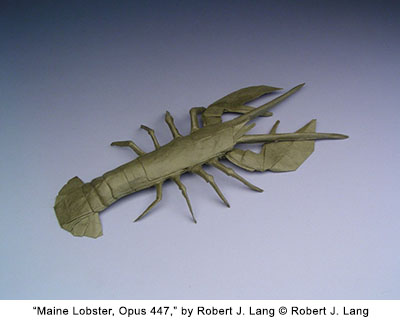
One uncut square of Korean hanji paper, 12", 2004, a composition in the series of crustaceans.
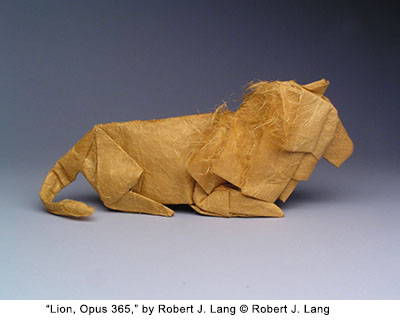
One uncut, untrimmed sheet of handmade paper, 12", 2003, a composition in my series of origami mammals. Classical origami is "one sheet, no cuts." But we still have to cut the paper to square. Or do we? This figure is designed to use an untrimmed sheet of handmade paper; the rough, irregular deckle edge is used to realize the mane.

One uncut square of St.-Armand paper, 8", 2007, a composition in the series of mammals.

One uncut 1' x 4 rectangle of Wyndstone 'Marble' paper, 6", 1998, a composition in my series of human figures.

One uncut square, 15", 2002, a composition in the series of origami fish.

One uncut square of Wyndstone 'Marble' paper, 8", 2003, a composition in my series of origami mammals.
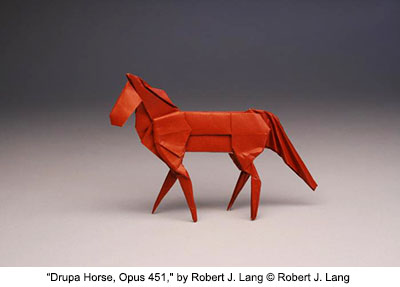
One uncut square of Canson Mi-Teintes, 6", 2013. The work, designed at the DRUPA trade show, is a composition in my series of origami mammals.

One uncut square of Origamido paper, 6", 2003, a composition in my series of origami insects.
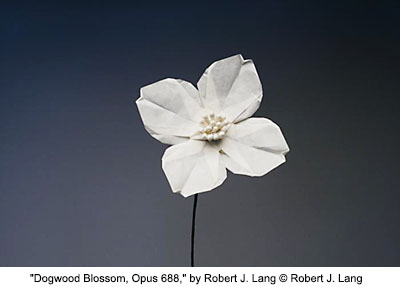
One uncut square of Korean hanji, 6" x 6" x 15", 2017, a composition in my series of origami plants and flowers.
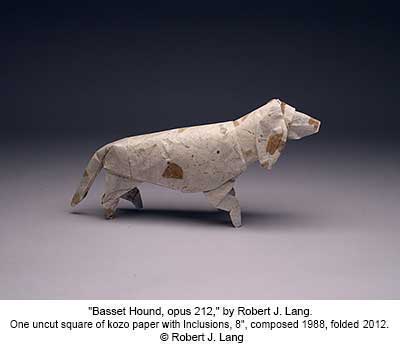
One uncut square of kozo paper with lnclusions, 8", composed 1988, folded 2012.

One uncut square of custom-made Origamido paper, 12", 2010. I designed this composition to show off the beauty of Origamido paper, which, I felt, matched the subject perfectly. This figure is folded from a sheet from a special batch of handmade paper, which was custom-designed and pulled at the Origamido Studio with the guidance and assistance of master papermakers Michael LaFosse and Richard Alexander.

One uncut square of Korean hanji, 8", composed 2002, folded 2003
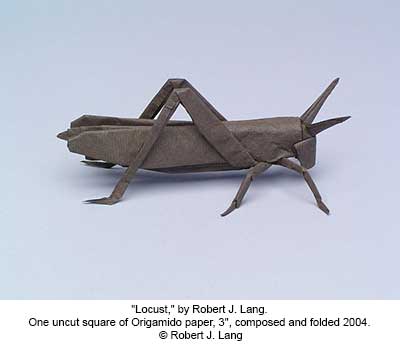
One uncut square of Origamido paper, 3", composed and folded 2004
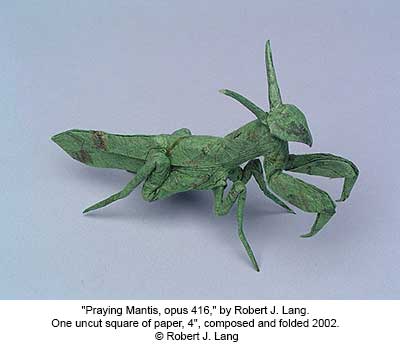
One uncut square of paper, 4", composed and folded 2002
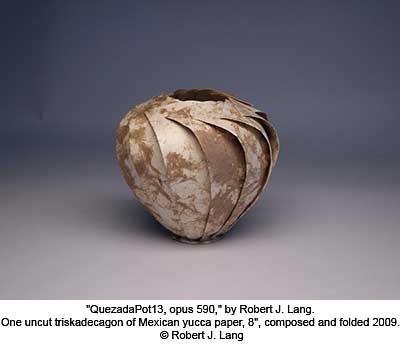
One uncut triskadecagon of Mexican yucca paper, 8", composed and folded 2009

One uncut rectangle of Thai unryu paper, 8", composed and folded 2008.
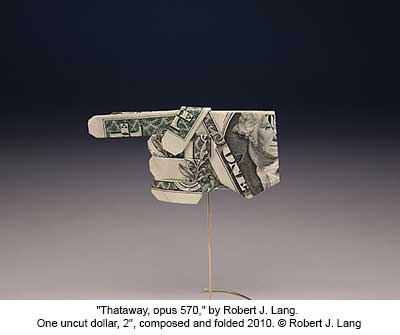
One uncut dollar, 2", composed and folded 2010.
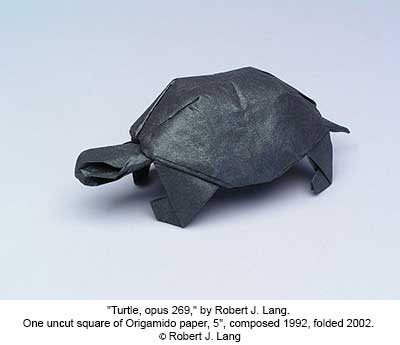
One uncut square of Origamido paper, 5", composed 1992, folded 2002.
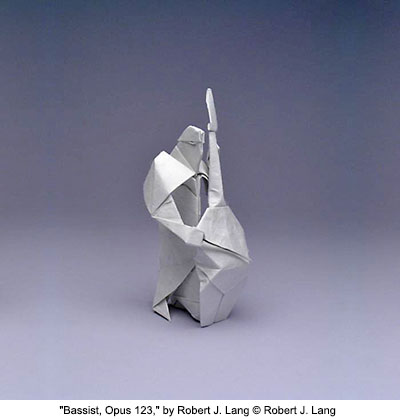
One uncut rectangle of Korean hanji, 7", 2004. This is an action model; pull his head and he fiddles his bass.
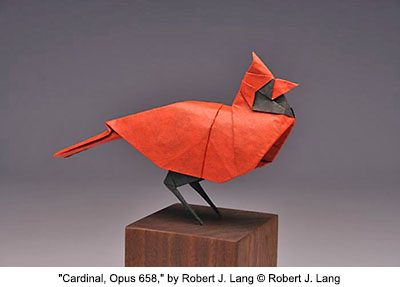
One uncut 20 cm square of red/black duo Origamido paper, 6" x 2" x 4", 2014. Wet-folded from Origamido paper. Paper makes a difference!
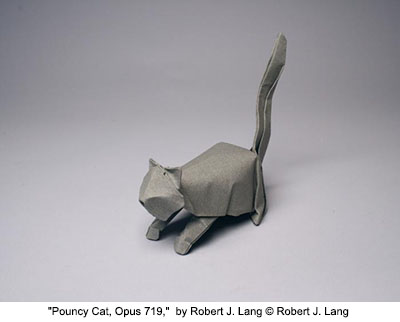
One uncut square of Canson Mi-Teintes paper, 7" x 3" x 6", 2016, a composition in the mammals series of origami works.

One uncut square of Japanese paper, 11" x 3" x 5", 2016. This work was composed during a trip to Kenya, then fine-tuned and folded after my return to Alamo.
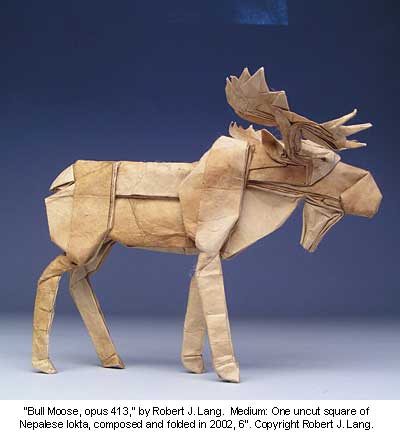
One uncut square of Nepalese lokta, composed and folded in 2002, 6".

One uncut square of Origamido paper, composed in 1993, folded in 2005, 5".
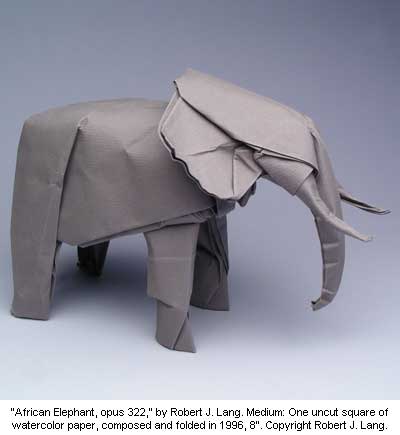
One uncut square of watercolor paper, composed and folded in 1996, 8".
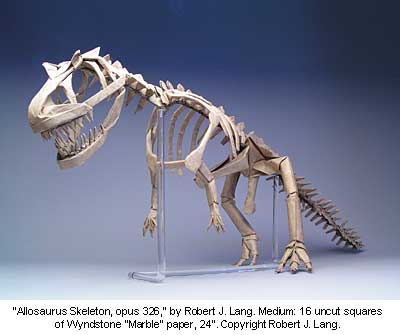
16 uncut squares of Wyndstone "Marble" paper, 24".
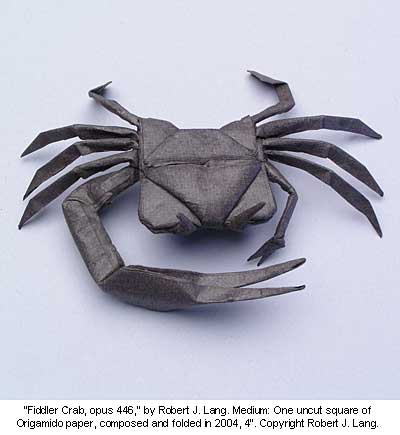
One uncut square of Origamido paper, composed and folded in 2004, 4".
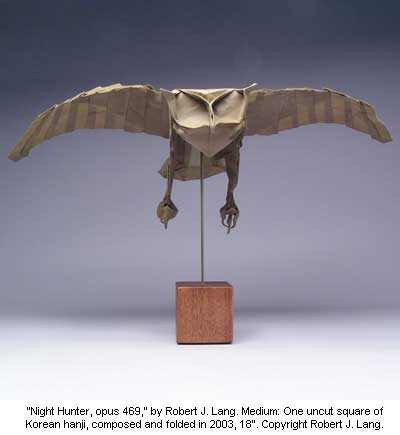
One uncut square of Korean hanji, composed and folded in 2003, 18".

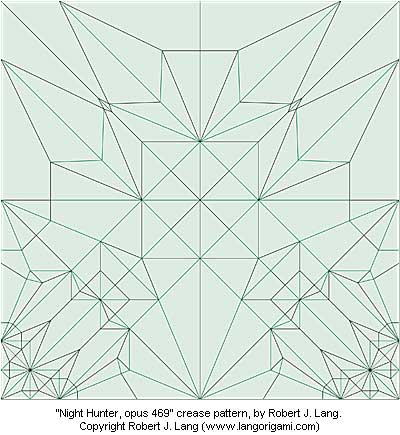
Crease patterns (CPs) provide a one-step connection from the unfolded square to the folded form, compressing hundreds of creases, and sometimes hours of folding, into a single diagram! A CP can sometimes be more illuminating than a detailed folding sequence, conveying not just "how to fold," but also how the figure was originally designed. Mathematical and geometric CPs usually show all the creases, but representational origami rarely shows every crease in the finished form, as it would make the crease pattern impossibly busy. Instead, the crease pattern gives the creases needed to fold the "base," that is, a geometric shape that has the right number and arrangements of flaps. It is still left up to the folder to add thinning and shaping folds. - Robert J. Lang
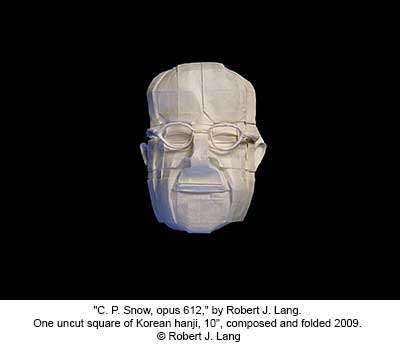
One uncut square of Korean hanji, 10", composed and folded 2009.



